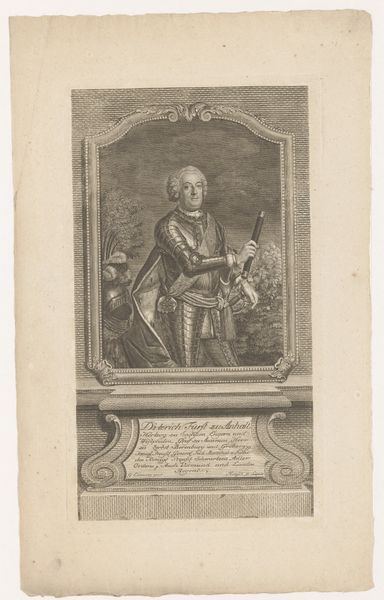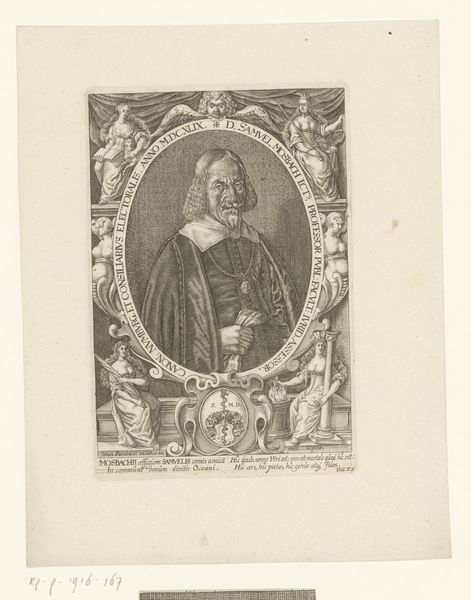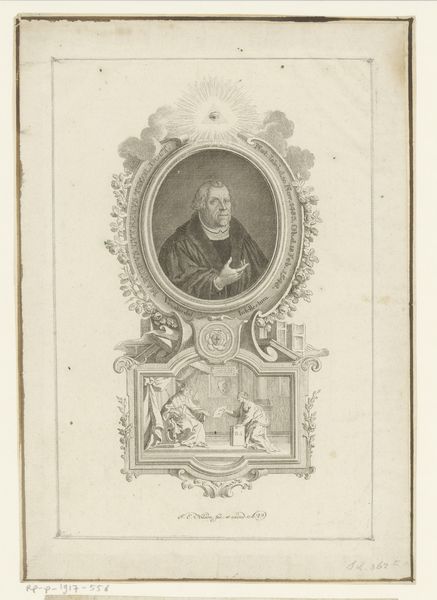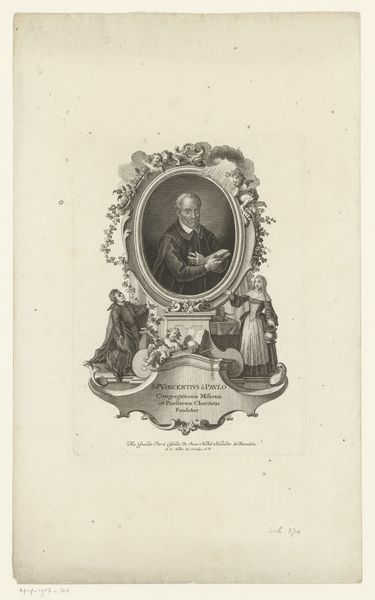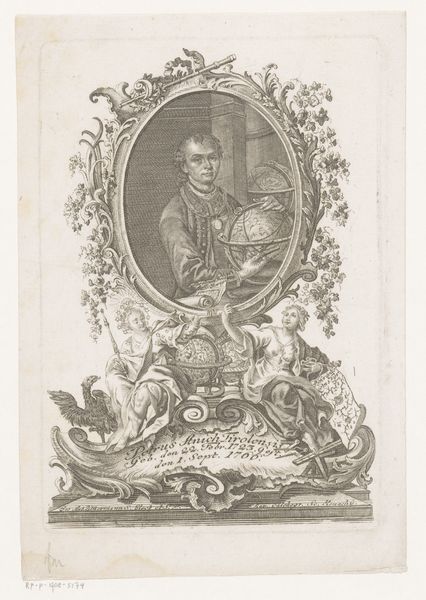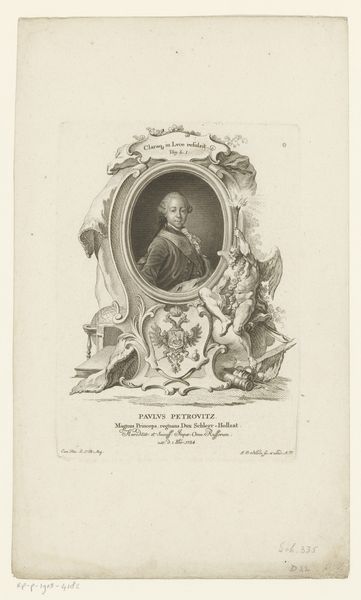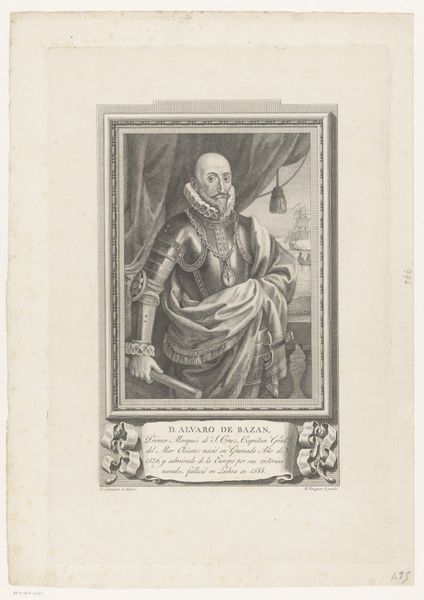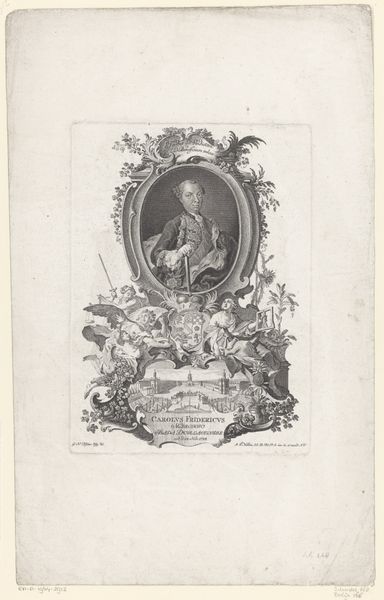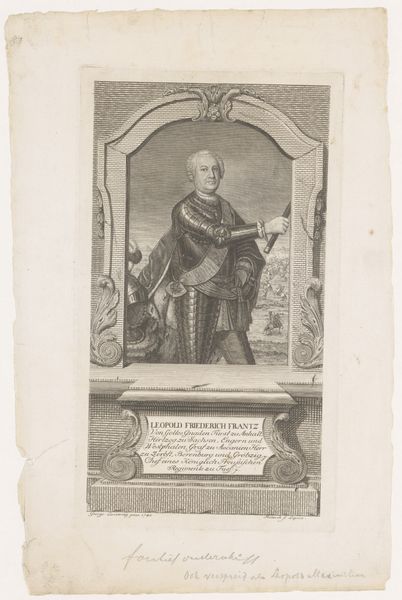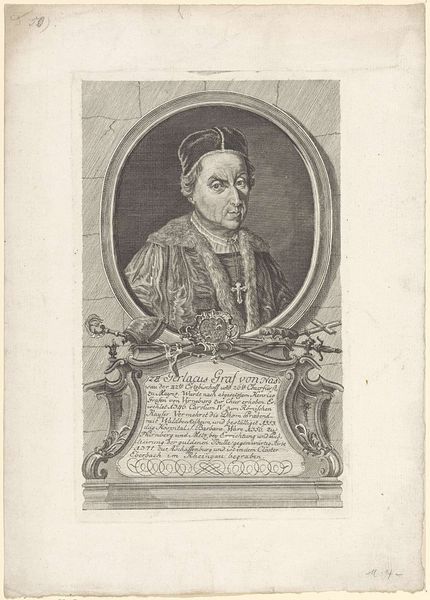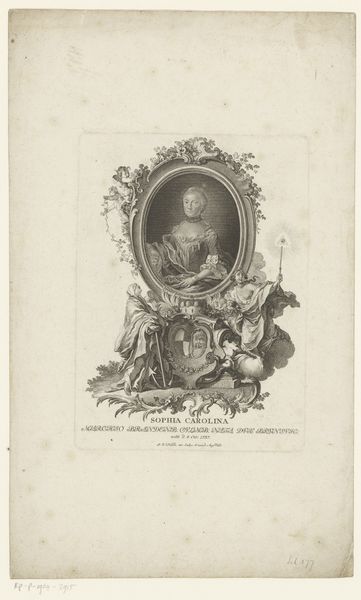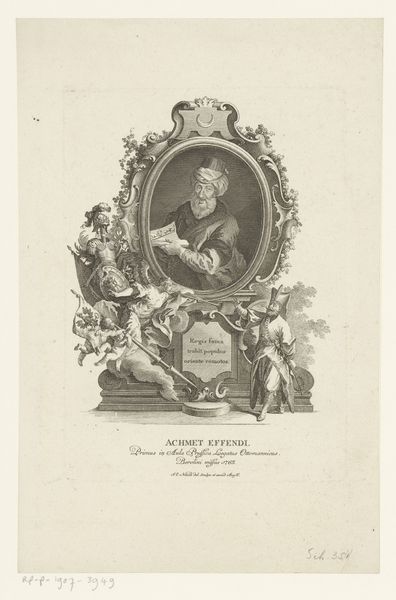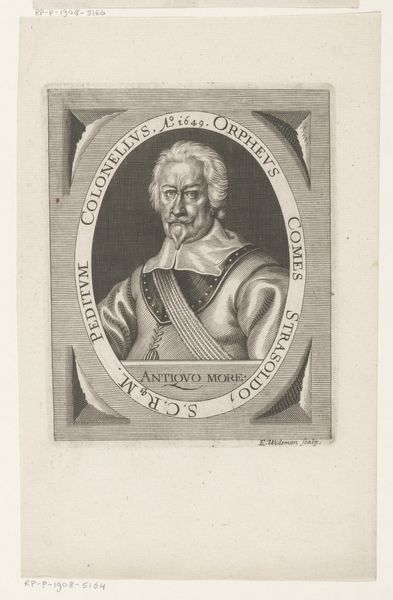
print, engraving
#
portrait
#
baroque
# print
#
old engraving style
#
history-painting
#
engraving
Dimensions: height 228 mm, width 168 mm
Copyright: Rijks Museum: Open Domain
Curator: We're looking at "Portret van Joseph Oriol," an engraving made sometime between 1731 and 1788, credited to Johann Esaias Nilson. It’s currently held here at the Rijksmuseum. Editor: My first impression is one of intense piety, almost theatrical in its presentation. The ornate frame and the cherubic figures contrast sharply with the rather somber portrait itself. Curator: Exactly. Baroque portraiture often utilized symbolic imagery to convey status and character. Oriol is depicted in an oval frame, a format reminiscent of religious icons and commemorative medallions, nestled amidst symbols of divinity and faith. Editor: Note the placement of the crucifix to his right – strategically placed in the scene’s composition. This recurring motif of the crucifix in proximity with learned individuals can act as an emblem, suggesting not just piety, but perhaps devotion to theological teachings or spiritual doctrine. What social and religious movements do we see influencing these iconographic symbols? Curator: Considering the socio-political context, Oriol was canonized as a Saint in 1909, solidifying a historical and social need for symbols of good will and divine influence during times of social strife. He has since represented hope and recovery within the communities. The original engraved print perhaps aided to propel him to the spotlight to further galvanize social progress in Barcelona, for example. Editor: I am struck by how even in the cherubs at the bottom, we have differing, recognizable presentations of angels. Do we see in Baroque art these figures also start to act as symbols for larger social phenomena that started influencing artistic visual depiction? Curator: That’s an intriguing interpretation! It’s not just a portrait of an individual, but also an indicator of the burgeoning canonization movement, illustrating the complexities of history, social change, and individual perception within a politically charged atmosphere. Editor: Indeed. The weight of religious symbolism and the context in which those symbols are consumed shapes the lasting resonance of this portrait. Curator: Thank you for that insightful iconographic analysis. I'm now looking at it in a different light, seeing beyond the immediate reverence to understanding the interwoven historical currents.
Comments
No comments
Be the first to comment and join the conversation on the ultimate creative platform.
